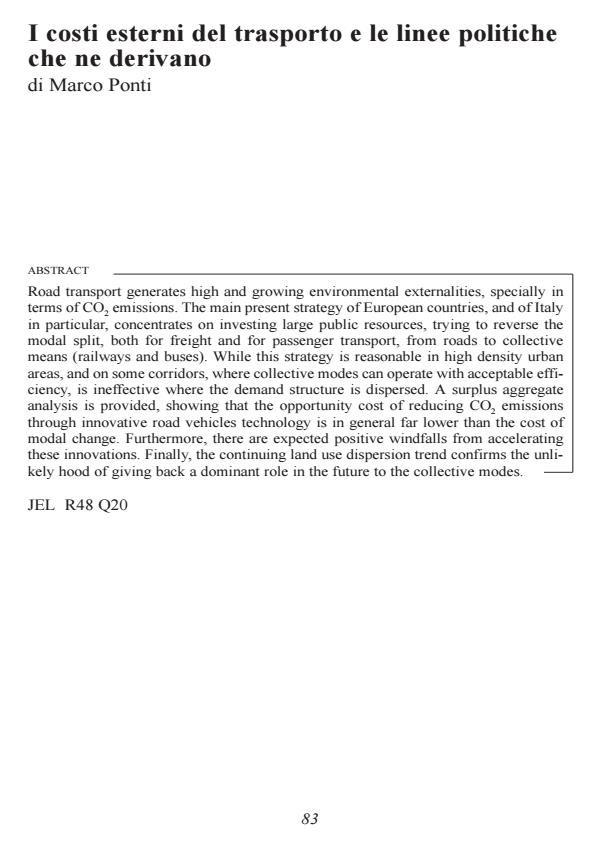I costi esterni del trasporto e le linee politiche che ne derivano
Journal title ECONOMIA PUBBLICA
Author/s Marco Ponti
Publishing Year 1 Issue 2000/5
Language Italian Pages 15 P. File size 1194 KB
DOI
DOI is like a bar code for intellectual property: to have more infomation
click here
Below, you can see the article first page
If you want to buy this article in PDF format, you can do it, following the instructions to buy download credits

FrancoAngeli is member of Publishers International Linking Association, Inc (PILA), a not-for-profit association which run the CrossRef service enabling links to and from online scholarly content.
Road transport generates high and growing environmental externalities, specially in terms of CO 2 emissions. The main present strategy of European countries, and of Italy in particular, concentrates on investing large public resources, trying to reverse the modal split, both for freight and for passenger transport, from roads to collective means (railways and buses). While this strategy is reasonable in high density urban areas, and on some corridors, where collective modes can operate with acceptable efficiency, is ineffective where the demand structure is dispersed. A surplus aggregate analysis is provided, showing that the opportunity cost of reducing CO 2 emissions through innovative road vehicles technology is in general far lower than the cost of modal change. Furthermore, there are expected positive windfalls from accelerating these innovations. Finally, the continuing land use dispersion trend confirms the unlikely hood of giving back a dominant role in the future to the collective modes.
Marco Ponti, I costi esterni del trasporto e le linee politiche che ne derivano in "ECONOMIA PUBBLICA " 5/2000, pp , DOI: